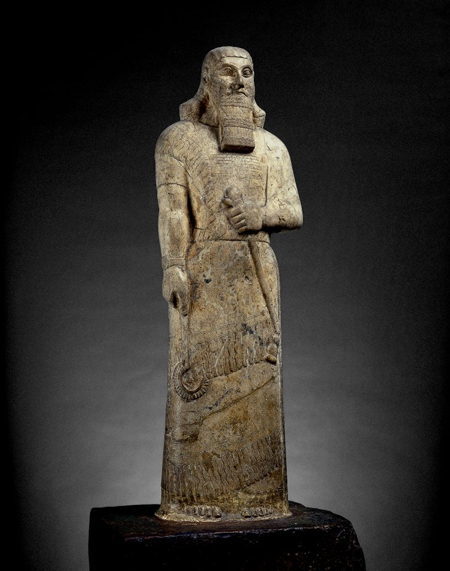Mesopotamia
Published
Category
Press Release
Acclaimed exhibition makes its North American debut at the ROM during its international tour

More than 3,000 years of accomplishments by the civilization are explored in the exhibition. Widely credited with the invention or development of writing, long-distance communication, law, trade networks, and the first empires, Mesopotamian society also launched and advanced literature and sophisticated art, concurrently with great intellectual, spiritual, and scientific advances. These achievements still influence us today.
Mesopotamia showcases more than 170 priceless objects from the eminent collections of the British Museum. These artifacts, most never before seen in Canada, are augmented by those from the ROM’s own renowned collections and other leading institutions, including the University of Chicago Oriental Institute Museum, the University of Pennsylvania Museum of Archaeology and Anthropology (Penn Museum, Philadelphia), and the Detroit Institute of Arts. Presented in a series of well-defined themes, the exhibition features an outstanding selection of artifacts: stunning jewellery, dramatic stone sculptures, and impressive wall reliefs.
Dr. Clemens Reichel, Associate Curator of Ancient Near East in the ROM’s Department of World Cultures and a specialist in Mesopotamian archaeology, is the curator of Mesopotamia during its ROMengagement. He comments, “Many things that we rely on in our daily lives originated in ancient Mesopotamia. Visitors will be surprised to learn just how much we owe to the Sumerians, Babylonians, and Assyrians.”
Geographically, Mesopotamia (from the Greek “[land] between the Rivers”) encompasses present-day Iraq, north-east Syria, and south-east Turkey. Urban civilization originated in the area, accompanied by the establishment of the first cities and complex forms of social organization and economic activity. Mesopotamia highlights benchmarks of the society’s social and technological developments as well as the emergence of city-states in ancient Sumer (4000 - 2000 BCE); the dominance of the Assyrian World Empire (1000 - 600 BCE); and the dramatic rise and fall of Babylon (600 - 540 BCE).
Exhibition highlights include magnificent gold jewellery found in tombs at the Royal Cemetery in the city of Ur, as well as several artifacts illustrating the accomplishments of famed lawgiver King Hammurapi (1792 - 1750 BCE). Others include a statue of King Ashurnasirpal II, the Assyrian king who reigned from 883 to 859 BCE. A rare surviving example of Assyrian sculpture in the round, this imposing figure was intended to demonstrate the king’s almighty power to his subjects. From the ROM’s own collections comes the Striding Lion, a stunning terracotta relief that once adorned the throne room façade of the palace of Babylon’s King Nebuchadnezzar II (604 - 562 BCE) – the very palace where Alexander the Great later died.
The exhibition touches on the rediscovery of Mesopotamia by the West, highlighting excavations in the 19th and 20th centuries. The catastrophic impact on Iraq’s cultural heritage following the 2003 looting of Baghdad’s Iraq Museum and the destruction of numerous archaeological sites, are examined in a dedicated component.
Mesopotamia at the ROM is augmented by a number of distinctive, interpretive elements including audio-visual installments; a 3-D fly-through of Babylon featuring the city-state’s famed landmarks the Tower of Babel and the Hanging Gardens of Babylon; and touchable reproductions. Interactive touch-screens, translation of ancient texts, and audio explanations also enrich the visitor’s enjoyment. Public programming for scholars, adults, and families takes place throughout the exhibition’s engagement.
-30-
Mesopotamia is presented by the British Museum in collaboration with the Royal Ontario Museum.



